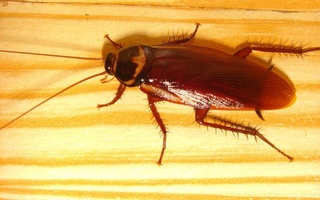Invasive pests are proving to be an increasingly damaging problem for New England’s natural ecosystems as they continue to evade control efforts, according to a recent talk by Harvard Forest Director David R. Foster and Harvard Forest researcher David A. Orwig.
Pests are natural inhabitants of areas with high concentrations of trees—such as New England—but the rate of pest influxes has increased dramatically since the mid -1800s when trade was popularized, Orwig said. He is a Senior Ecologist at the Harvard Forest and has spent the last 15 years studying invasive pests.
At an earlier talk Harvard Museum of Natural History in September , Foster and Orwig discussed the threats posed by the hemlock wooly adelgid, the emerash ash borer, and Asian longhorn beetle. As commercial continues to increase, plants and material goods get moved around farther and more quickly, Orwig said. He explained that the biggest issue in the spread of pests lies in the transport mechanisms: wooden crates.
“They come in on woody packing material in larvae and they eat their way out and they escape [...] back into our forests, and they continue to reproduce from there,” Orwig said.
Forest researchers are interested in the way these pests have not only led to the near elimination of several tree species, but also disrupted the natural interactions among many native species of plants, fungi, trees, and birds.
The hemlock woolly adelgid--an aphid-like insect-- is one of area’s most widespread pests. It was first introduced to the United States in Virginia from Japan and has been in Massachusetts since 1989, according to Orwig.
“Despite its small size, it reproduces extremely well and there is no known resistance or effective native predators,” said Orwig. “So really, it’s just continuing to wreak havoc.”
The recent influx of adelgid is larger in scale than any other historical invasion and efforts to curb the species’ growth has proven very difficult, he said. He added that the best way to prevent pest spread is to detect pests as early as possible. Researchers at the
Harvard Forest focus on ports of entry for the pests, and once found, aim to quarantine them.
The battle against another regional pes—the Asian long-horned beetle--has proven effective in some areas due to early detection efforts.
“They found the Asian long-horned beetle at the Faulkner Hospital [in Boston], but they only had to remove six trees because they found it right away,” said Orwig. “But you look at Worcester and they’ve had to remove 30,000 trees because it took ten years to detect.”
There are chemical means to control these insects as well, but they are only useful in localized places like backyards or smaller parks.
Orwig said bio-control—the introduction of new predators to infested areas—is often ineffective because the predators usually can’t reproduce in the new habitat as well as the pests themselves.
“You go to the country of origin of these pests, and see what’s eating them over there and then we try to introduce them into our forest and see if we can get rid of them that way,” Orwig said.
But non-native predators could also prey on native organism—potentially dangerous consequence that leaves investigation of safe pest control open for further research.
Read more in News
Examining Her FootprintRecommended Articles
-
 Attack of the Ladybugs!
Attack of the Ladybugs! -
 Currently Raiding your Dorm
Currently Raiding your Dorm -
 Attack of the Ladybugs!
Attack of the Ladybugs! -
Residents Fear Drop in Property Values as Housing Unit RelocatesResidents living near the future construction site for the relocation of a low-income housing unit are concerned that the complex’s move might decrease their property values.
-
Forest Seminar Series Aims To Engage StudentsAs pointed dialogue about climate change takes place both on and off campus, the Harvard Forest Seminar Series this semester seeks to spark discussion on environmental issues.













